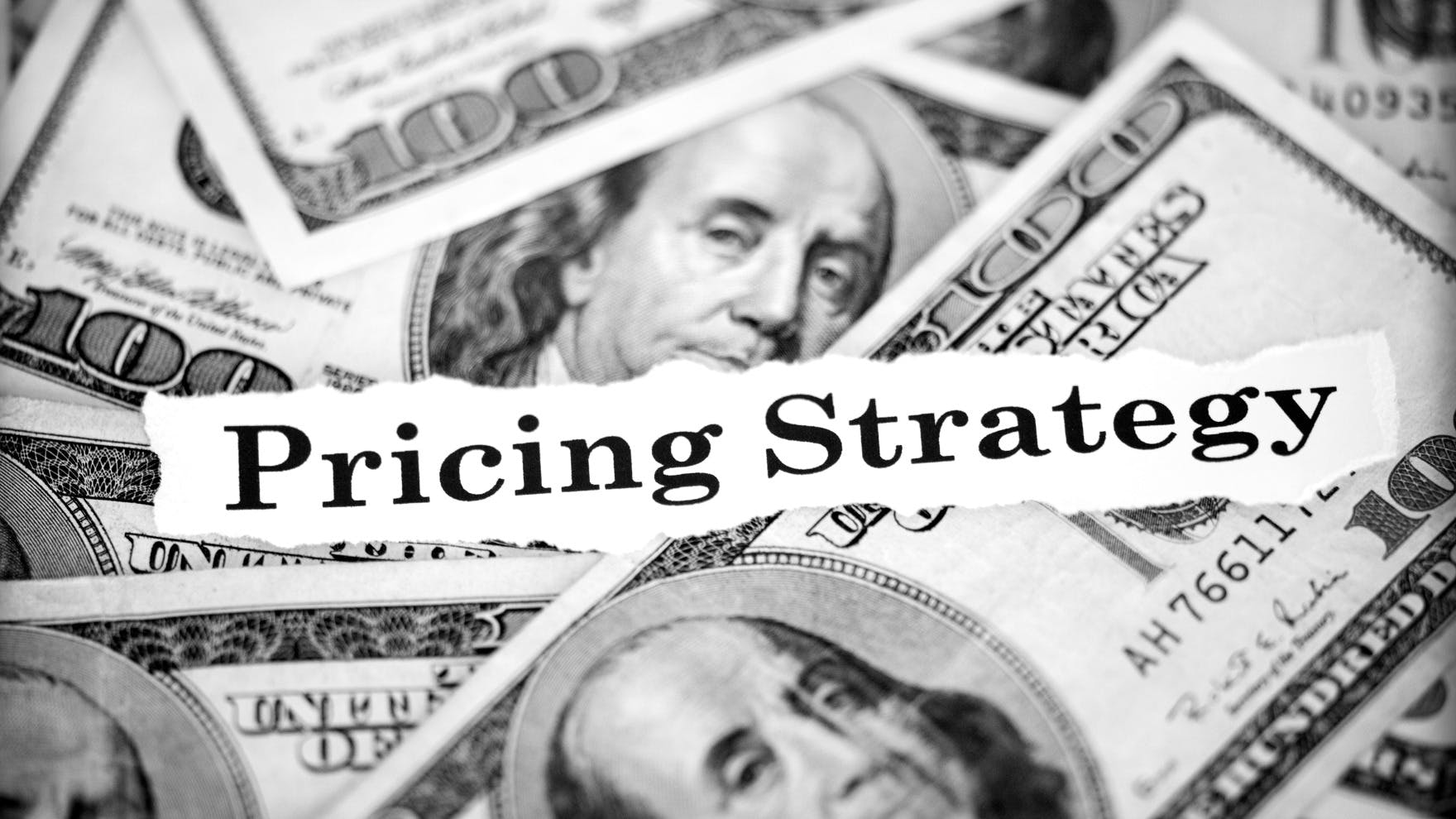23 Pricing Strategies & Models for 2023
Casey O'Connor
A company’s pricing strategy and pricing model are two of the most influential factors when it comes to generating revenue.
A very small change in price has been shown capable of creating a 20 – 50% upswing in revenue; shockingly, though, fewer than 5% of organizations have people or teams dedicated to implementing pricing strategy and developing pricing models. This is a tremendous amount of money being left on the table.
In this article, we’ll go over everything you need to know about pricing strategies and pricing models for 2023, including why they’re so important, how to choose the right ones for your business, and pitfalls to avoid.
Here’s what we’ll cover:
- What Is a Pricing Strategy?
- What Is a Pricing Model?
- Why Pricing Is So Important for Sales
- 14 Pricing Strategies
- 9 Pricing Models
- How to Choose a Pricing Strategy
- Pricing Mistakes to Avoid
What Is a Pricing Strategy?
A pricing strategy is the way your company determines the best price for your product in your market.
The goal of a pricing strategy is to position your product in a way that both attracts and convinces buyers, and also generates profit.
In other words, the pricing strategy is the way in which companies figure out how much they should charge.
Sales teams need to consider a multitude of factors when creating pricing strategies.
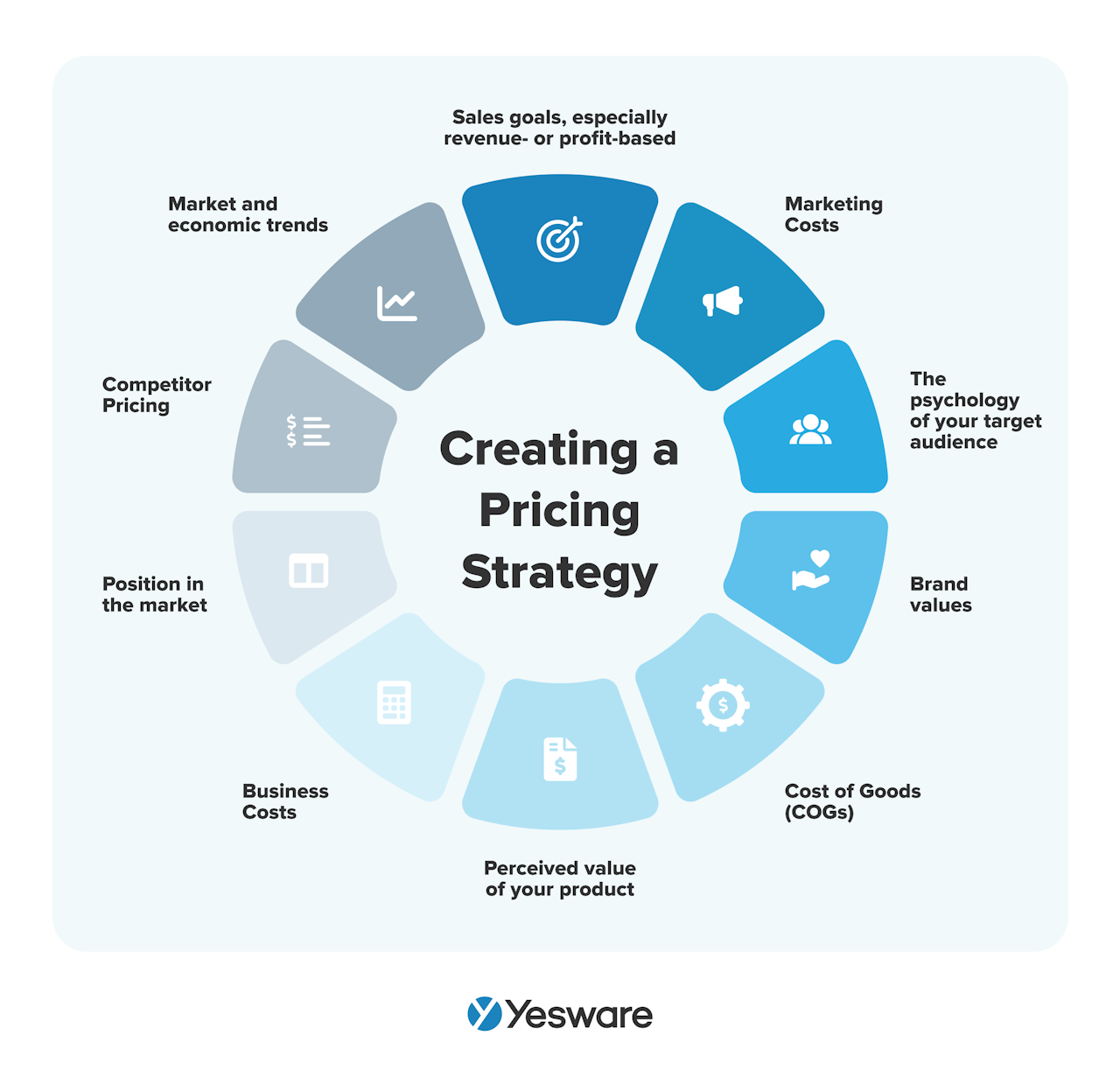
An effective pricing strategy helps sales teams maximize their profits while navigating buyer needs and market changes.
What Is a Pricing Model?
Pricing models are often mistakenly interchanged with pricing strategies, but the two are actually different.
Pricing strategies are created internally. The customer typically isn’t privy to the process of creating the pricing strategy.
Pricing models, on the other hand, are external. Your pricing model is the way you format your price and present it to the customer.
The best pricing model for your needs will depend heavily on your industry or business.
Why Pricing Is So Important for Sales
Pricing products can be deceptively challenging. For many sales teams, there’s a fine line between pricing products to maximize profits, and scaring prospective customers away with a price that’s too high.
On the other hand, sales teams may price their products too low, and give the perception that their product is cheap or low-value.
Pricing products effectively is how companies create sustainable growth.
It also:
- Entices prospects in your target market to buy your product
- Demonstrates your brand’s value
- Encourages buyers to trust your offer/product
Choosing the right pricing strategy can be up to 7.5x more impactful than customer acquisition.
14 Pricing Strategies
The best pricing strategies are the ones that maximize revenue and profit, but still help generate a healthy pipeline of leads. Here are 14 of the most popular pricing strategies.
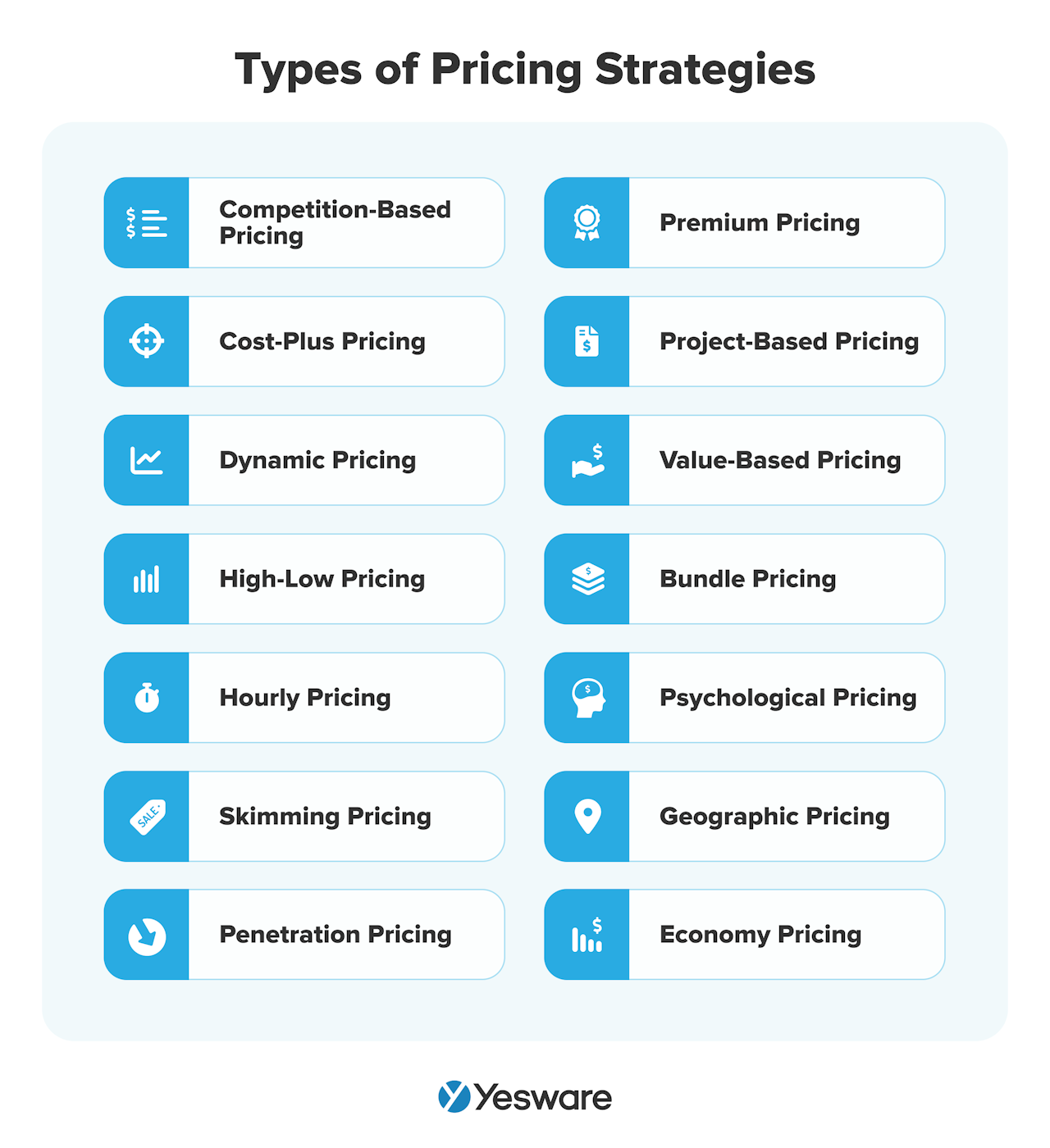
1. Competition-Based Pricing Strategy
Competition-based pricing strategy is also known as competitive pricing or competitor-based pricing. This sales strategy uses the “going rate” for the product in the existing market to help set the price for the offer.
Competition-based pricing does not factor in the cost of goods (COGs) or buyer demand.
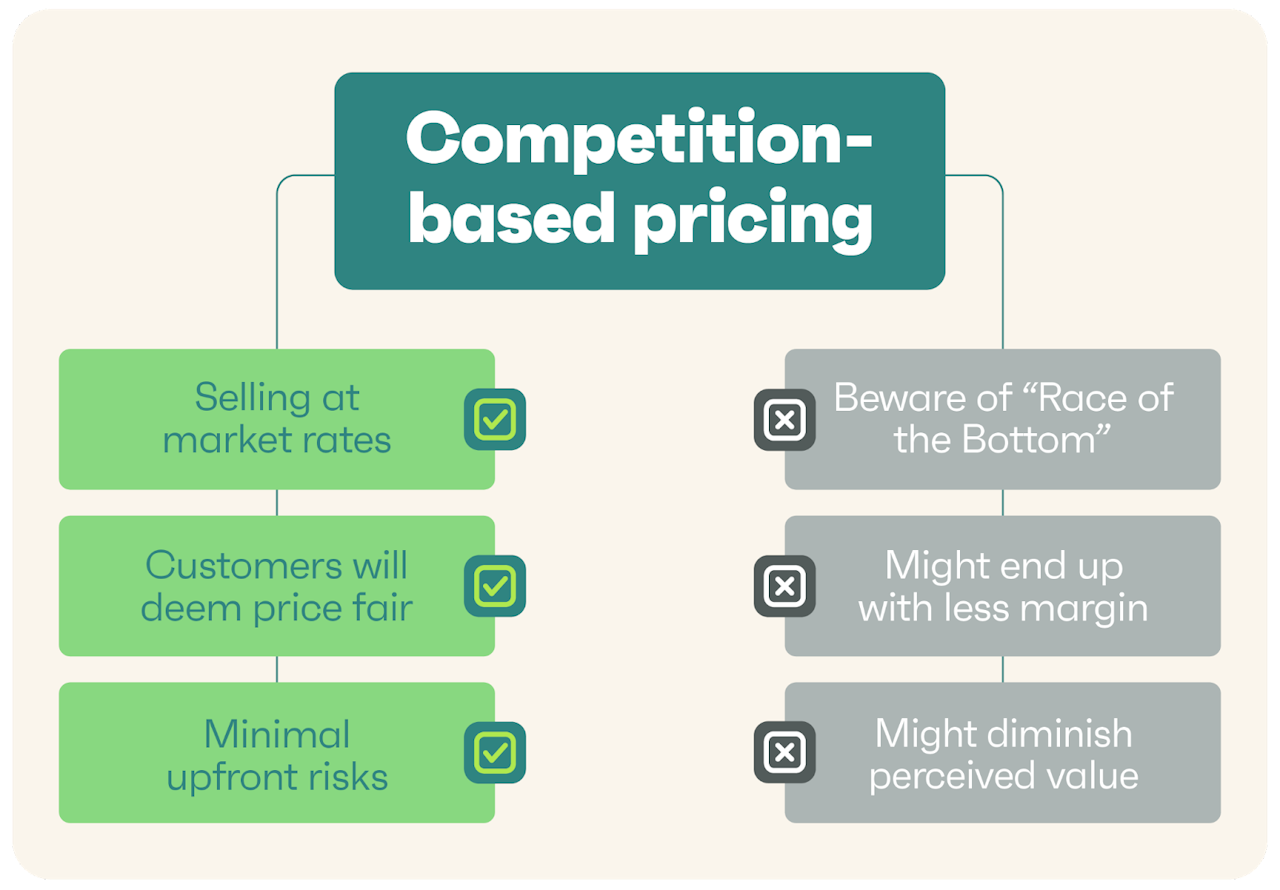
It’s a bit counterintuitive, but a competition-based pricing strategy doesn’t always mean that you need to be priced lower than your competitor. Using this strategy can also mean pricing yourself a bit higher than your competition.
Most B2B buyers are more concerned with value than they are with cost, so offering something that your competitor doesn’t can help you command a slightly higher cost than the competition.
2. Cost-Plus Pricing Strategy
The cost-plus pricing strategy is based on how much it costs to produce your product. This strategy is also sometimes known as markup pricing.
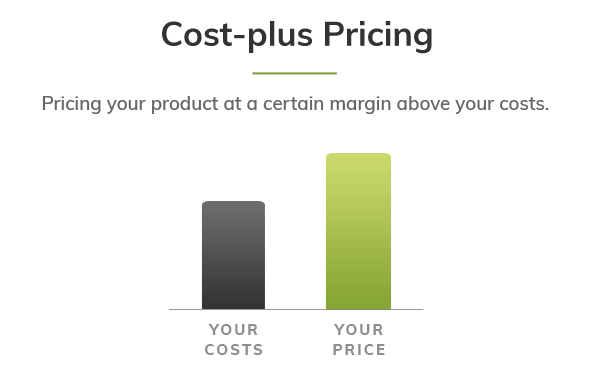
Cost-plus pricing can work very well for sales reps who sell physical products, but it may not be the best fit for SaaS companies or other service offers. It’s most effective when it’s used in a market where the competitors also use cost-plus pricing.
This pricing strategy is not as concerned with how much a customer is willing to pay (WTP), but it does still need to fall in that range.
3. Dynamic Pricing Strategy
Dynamic pricing goes by a few other names, as well: surge pricing, demand pricing, and time-based pricing. It’s the strategy made well-known by Uber, and is also used by hotels, airlines, and even utility companies.
This strategy has fluctuating price points based on customer and market trends and demand. 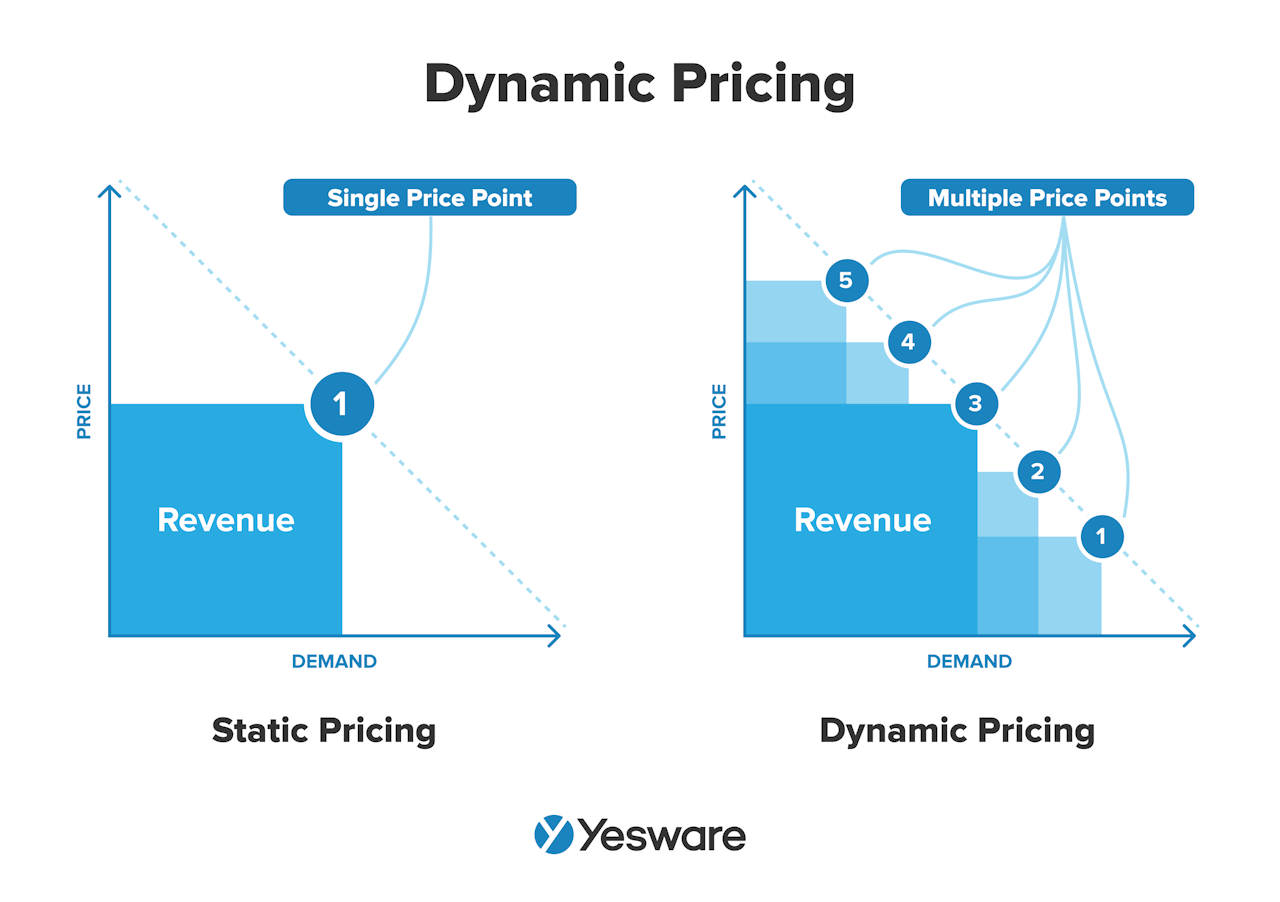 Dynamic pricing is flexible and allows sales teams to change their prices according to what the customer is willing to pay. As demand goes up, or supply goes down, prices go up. As demand falls, or supply goes up, prices go down.
Dynamic pricing is flexible and allows sales teams to change their prices according to what the customer is willing to pay. As demand goes up, or supply goes down, prices go up. As demand falls, or supply goes up, prices go down.
4. High-Low Pricing Strategy
A high-low pricing strategy is when a company enters the market at a high price, but lowers it as demand drops. This is sometimes called a discount pricing strategy. 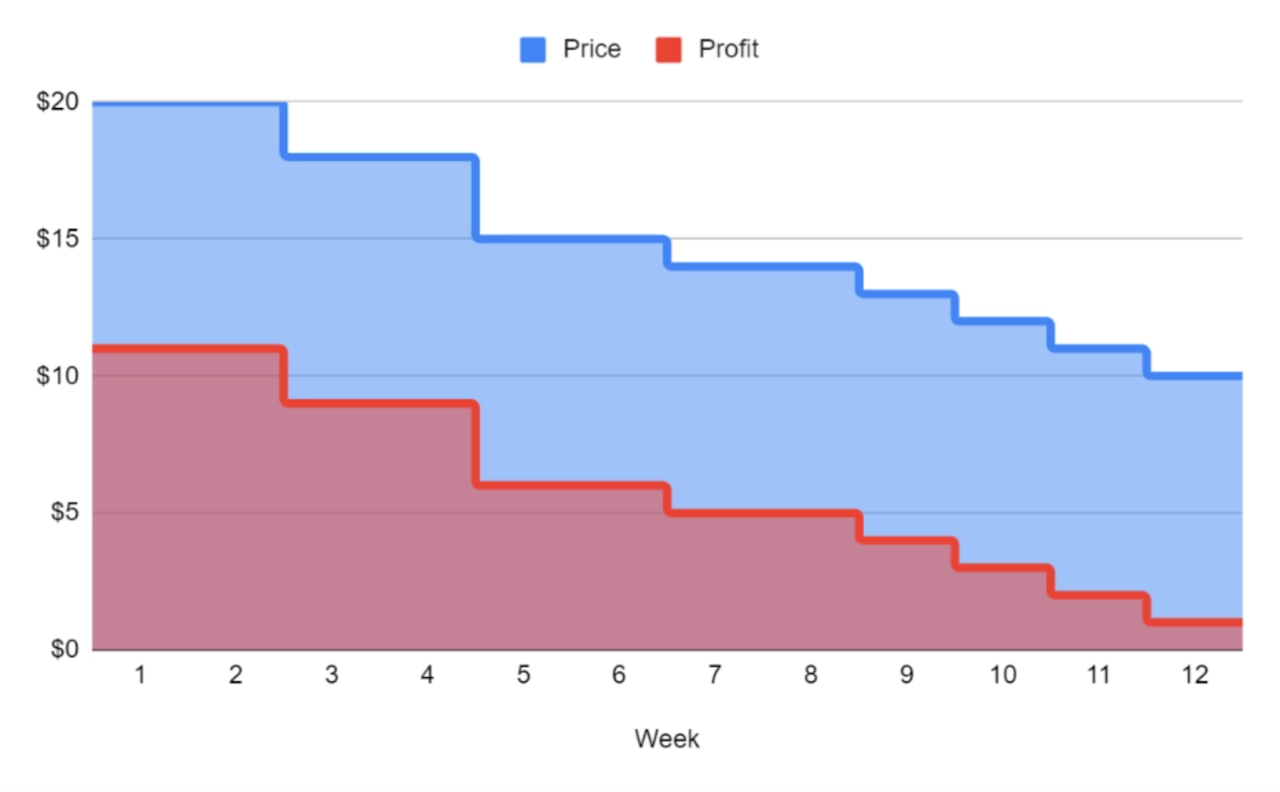 High-low pricing is common in retail, especially in seasonal markets.
High-low pricing is common in retail, especially in seasonal markets.
5. Hourly Pricing
Hourly pricing is also known as rate-based pricing. This is a strategy commonly used by freelancers, consultants, and contractors.
Hourly pricing is, in essence, a trade of time for money. It’s a very effective strategy for fast and/or high-volume projects.
6. Skimming Pricing Strategy
Skimming pricing is similar to high-low in that they both start at high prices and then drop lower — but a skimming strategy lowers prices much more gradually.
With a skimming price strategy, companies enter the market at the highest price possible. They then lower it over time as the product loses popularity. The intention here is to “skim” profits off the small subset of people who are willing to pay more.
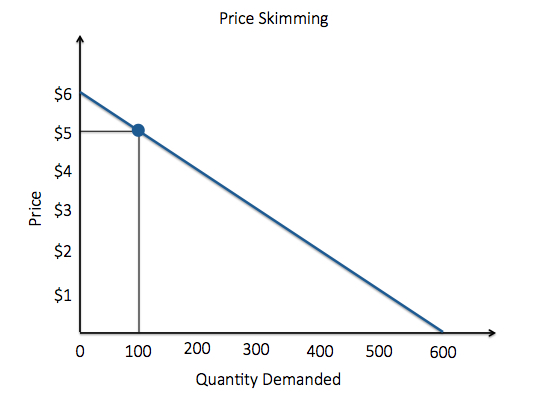
This strategy works well for businesses who sell products with various life spans.
It’s also worth noting that this strategy can be a turn-off for customers who buy at full price without realizing that the price will eventually be lowered. It can come off as untrustworthy to a certain subset of buyers.
7. Penetration Pricing Strategy
In a penetration pricing strategy, a company enters the market at an unsustainably low price. This generates a lot of attention and often convinces your competitors’ customers to jump ship with the competition and sign on with you instead. There will be loss, but — if done well — the loss will only be temporary.
Once customers are signed on with you, their experience needs to be outstanding enough that they stay on with you, even after you inevitably raise your prices. If you have an incredible offer, this strategy can work — but beware of the risk. It can only be used for a short period of time.
Penetration pricing can work very well for new businesses or those that are trying to break into a new and ultra-competitive market.
8. Premium Pricing Strategy
Premium pricing is also known as luxury pricing or prestige pricing. It’s one of the more commonly-known pricing strategies and centers around setting products at a high price point in order to portray high value and luxury (and generate maximum profit).
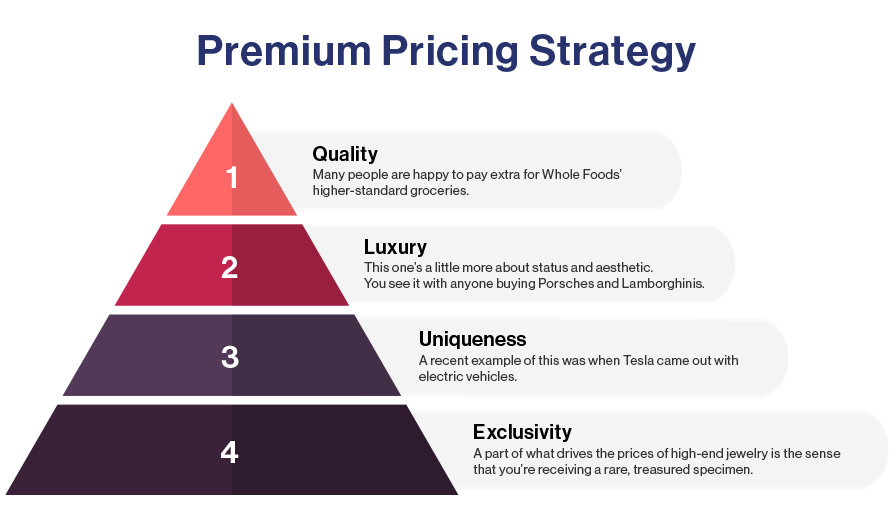
This pricing strategy is all about perceived value; COGs will not really come into play when setting a premium price. This strategy is often used in the fashion and technology industries.
Controlling supply and driving up demand can help you stay competitive at a premium price.
9. Project-Based Pricing Strategy
Project-based pricing strategy is essentially the opposite of hourly pricing but is generally used by the same subset of “sellers” (consultants, freelancers, and contractors).
A project-based strategy charges a flat fee for each project.
For some customers, the value of a one-time investment in a quality product rather than an hourly fee may be an attractive option.
10. Value-Based Pricing Strategy
In value-based pricing, companies structure their pricing around the WTP price — in other words, what the customer is willing to pay. If a business can’t stay in that range, they need to increase the value of their offer to accommodate that.
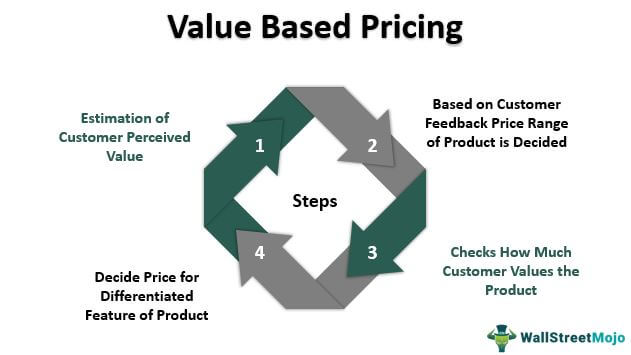
This strategy can be quite effective, especially for B2B and SaaS companies, but it requires sales and marketing to be very in tune with their buyer personas. There should be distinct segments within the target audience that enable you to precisely tailor your pricing strategy for each persona.
11. Bundle Pricing Strategy
A bundle pricing strategy is an offer of two or more complementary products sold together for a single price.
This is a great way to upsell or cross-sell products. 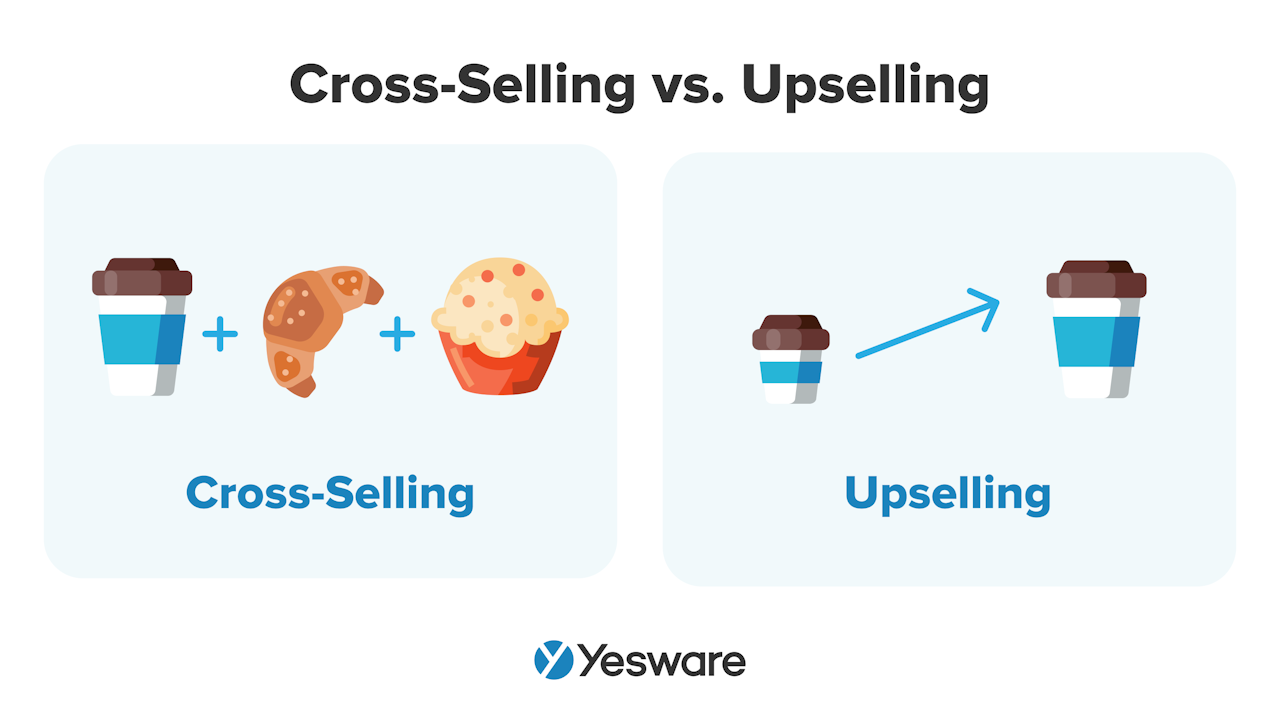 Bundle pricing helps you sell more products than you would otherwise, and can be a great way to get customers hooked on your brand.
Bundle pricing helps you sell more products than you would otherwise, and can be a great way to get customers hooked on your brand.
12. Psychological Pricing Strategy
Psychological pricing strategy is all about — you guessed it — human psychology. It requires sales and marketing to have an extremely thorough understanding of their ideal customer profile and the various buyer personas within it.
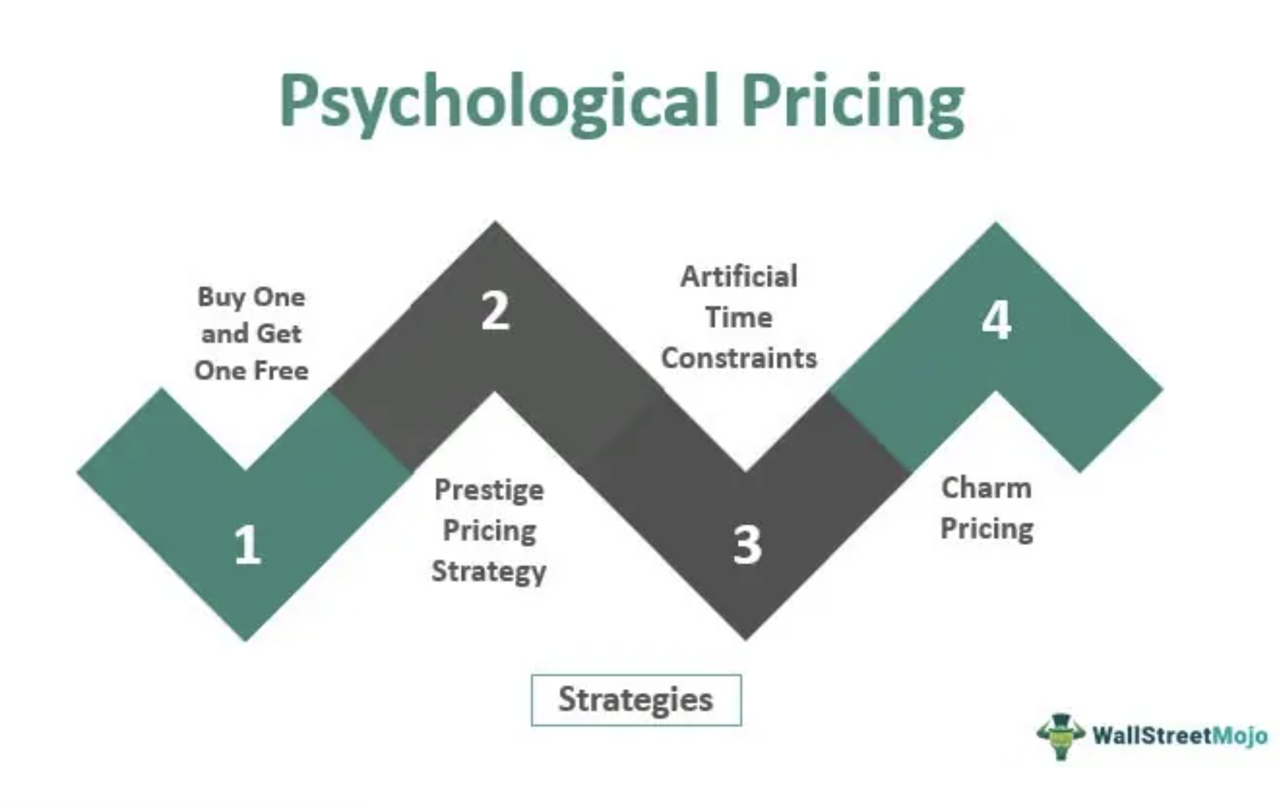
In this strategy, pricing and accompanied marketing need to appeal directly to the unique needs and desires of your buyer.
13. Geographic Pricing Strategy
In a geographic pricing strategy, products are priced according to a buyer’s geographical location.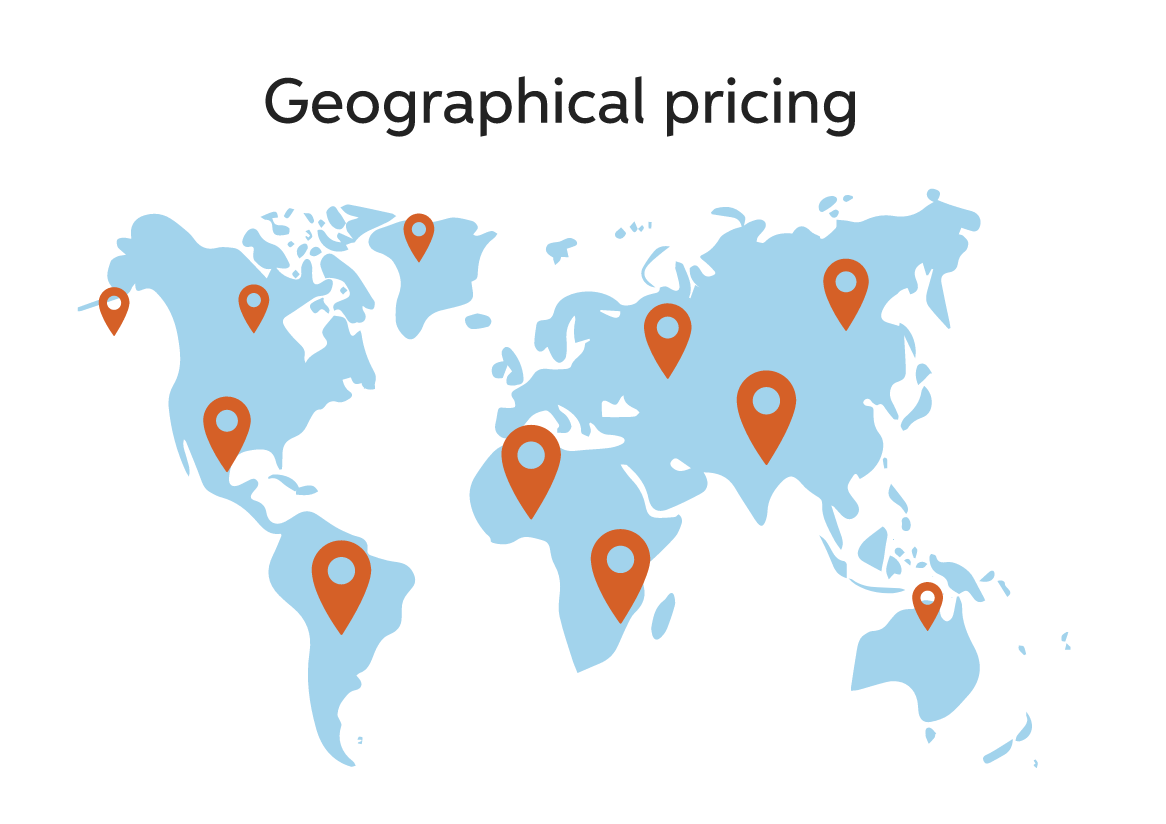 This pricing strategy has been made a lot simpler with the rise of digital marketing. Most capable sales and marketing software platforms can easily segment your prospect list by city, zip code, or region, and that automation goes a long way in creating an effective geographic pricing strategy.
This pricing strategy has been made a lot simpler with the rise of digital marketing. Most capable sales and marketing software platforms can easily segment your prospect list by city, zip code, or region, and that automation goes a long way in creating an effective geographic pricing strategy.
This strategy can be very helpful in controlling marketing costs.
14. Economy Pricing Strategy
Economy pricing entails setting the lowest price in the market with the intention of attracting bargain hunters. It places little emphasis on product quality and instead markets to the subset of buyers who are willing to abandon quality for a lower price.
9 Pricing Models
Following is an overview of nine of the most common pricing models.
These pricing models can be applied to a wide range of industries and could be effective for many different target markets.
As always, adapt as you see fit for the unique needs of your buyer.
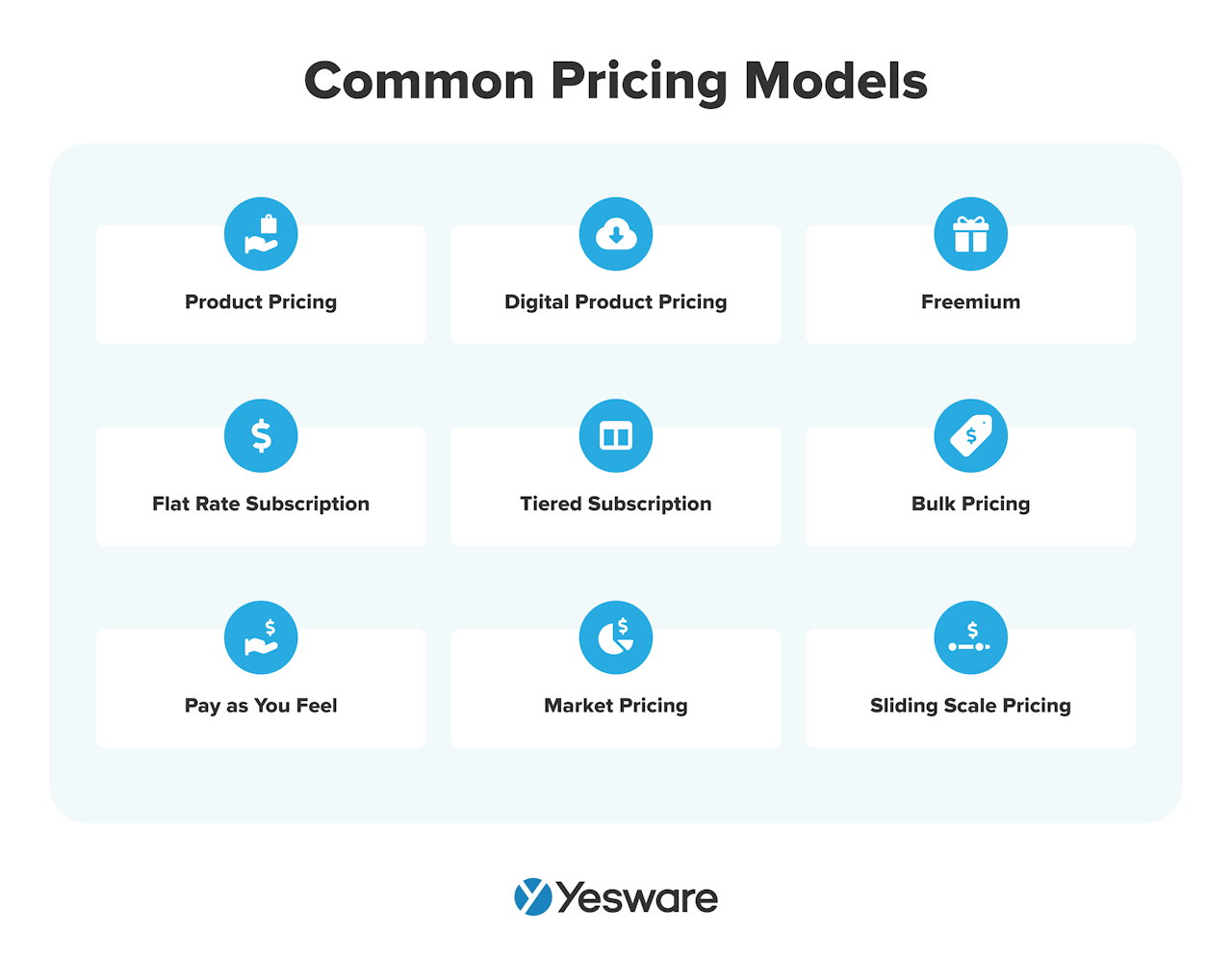
1. Product Pricing Models
Product pricing models need to take into account the costs of selling physical products. This includes everything involved in the process, including shipping, manufacturing, storage, cost of material, and more. It’s designed to maximize profit and hold up against the tough competition.
2. Digital Product/eCommerce Pricing Model
A digital product or eCommerce pricing model deals with online offers. These are intangible offers. Digital products include things like software, online courses, and ebooks. Pricing models in this market need to reflect the value of your product and your brand.
3. Freemium Pricing Model
The freemium pricing model offers parts or all of the product for free. Sometimes the offer may also or alternatively include mandatory ads. Pandora, for example, offers a free version that requires listeners to intermittently hear advertisements in between songs. In this pricing model, profit is generated from customers who opt to pay more for better or more features, or a better experience.
4. Flat Rate Subscription Pricing Model
In a flat-rate subscription pricing model, customers pay a fixed rate at regular intervals. This is commonly used in SaaS pricing models.
5. Tiered Subscription Pricing Model
In a tiered subscription pricing model, users can choose an offer among varying levels of features and price points. Some sales and marketing teams use this pricing model strategically; positioning your best offer as the “middle tier” can often subconsciously draw buyers toward it because it seems like the best value. This is another popular pricing model with SaaS companies.
7. Bulk Pricing Pricing Model
Places like BJ’s and Costco have made bulk pricing a well-known pricing model. In this model, the price goes down as the volume of the product goes up. And it’s not only common in grocery wholesalers — it’s also really popular in certain B2B industries.
6. Pay as You Feel/Pay What You Want Pricing Model
This pricing model is unique and usually reserved for things like fundraising or charity events. This pricing model is exactly as it sounds — “customers” can choose how much they’d like to pay for a product or service (or, in the case of something like a charity auction, it would be a prize). They determine how much value the offer is worth to them and pay accordingly.
8. Market Pricing Model
A market pricing model is based on supply and demand. This price structure will fluctuate along with the market.
9. Sliding Scale Pricing Model
A sliding scale pricing model also includes fluctuating price points, but they don’t vary according to the market. Instead, a sliding scale pricing model has prices that fluctuate based on how able a buyer is to pay.
There’s usually a standard or recommended price that “anchors” the scale, and it slides up or down depending on the buyer’s means.
Tip: Looking for new ways to market your pricing model? Grab some psychology-backed tips below to help you connect with buyers and increase sales.
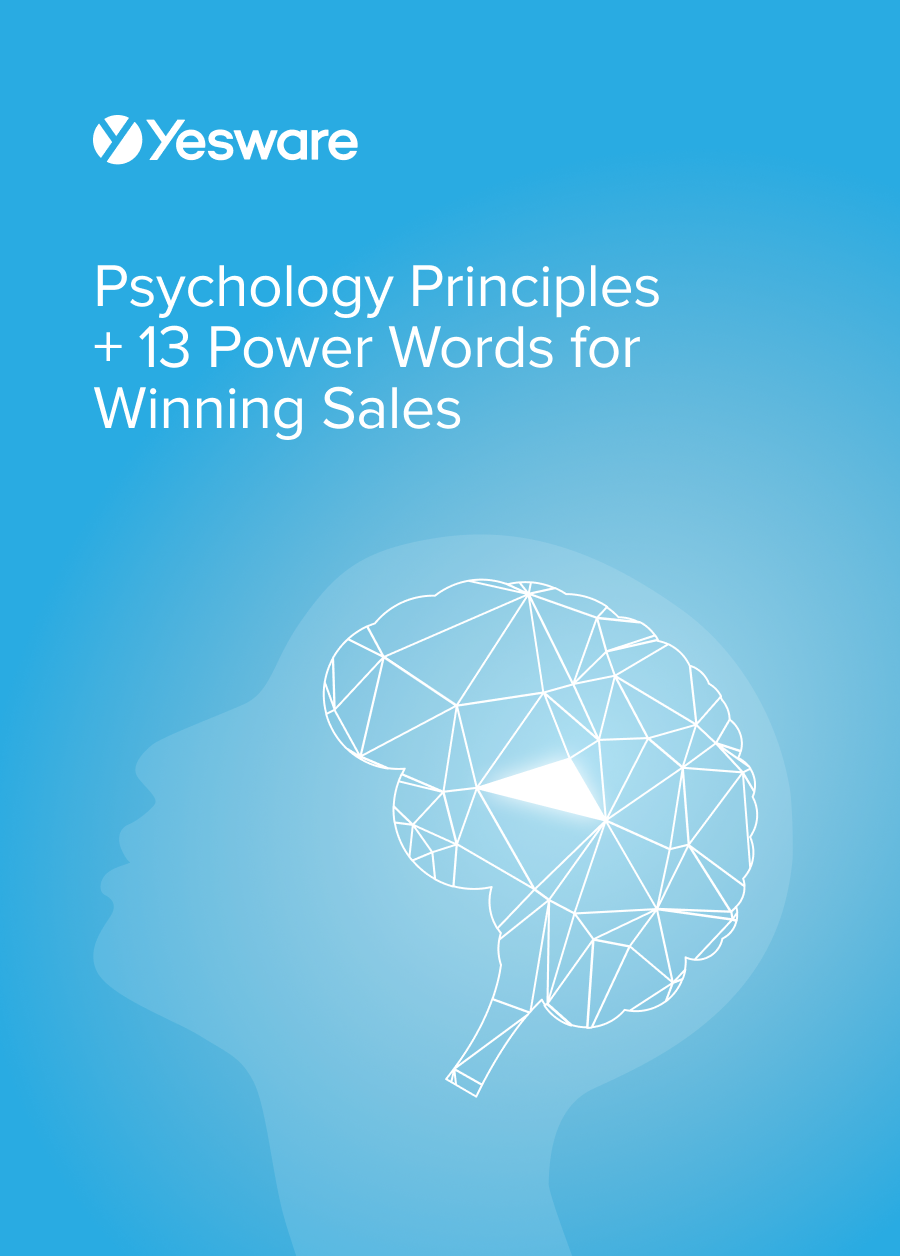 Psychology Principles + 13 Power Words for Winning SalesData-backed psychological principles, nonverbal cues, and persuasive phrases to win more deals.
Psychology Principles + 13 Power Words for Winning SalesData-backed psychological principles, nonverbal cues, and persuasive phrases to win more deals.
How to Choose a Pricing Strategy
Choosing the right pricing strategy for your organization can be challenging, and take some time. It’s an iterative process and is done best through careful data collection and analysis.
Don’t skimp on calculations here — your team needs to have crystal-clear numbers for COGs, profit goals, and sales funnel efficiency.
The other important factor in choosing a pricing strategy is understanding consumer psychology.
Aside from the data and psychology components, the following steps will guide your team toward a good-fit pricing strategy for your offer.
Remember, this is likely not going to be settled on the first try. Repeat the steps as often as needed until the pricing strategy is optimized. It will also need to be re-addressed according to any market or buyer changes.
1. Calculate Your Costs
Even for pricing strategies that don’t factor in COGs, calculating your production costs is still a very important part of determining the right fit for your team. Calculating costs should include product materials, employee salaries, overhead costs, and the cost of any technology or software used to make the product.
You’ll also want to factor in any costs from legal, accounting, marketing, shipping, and transportation.
The common characteristic of all successful pricing strategies is that they generate more money than it costs to make the product. Figuring out your costs is the first step in creating that kind of pricing strategy.
2. Consider Additional Factors
You’ll also want to consider other things that sometimes play into pricing strategies. Some markets, like those that work with lumber, oil, or metals, can be at risk for extreme fluctuations in price or availability.
Even organizations that don’t rely on commodities can be affected by market forces. Global, social, and/or political events can impact just about every business, and market shifts and disruptions can happen at any time.
Part of the pricing strategy needs to include a careful eye toward market trends and major events.
3. Hone Your ICP and Buyer Personas
Your pricing strategy needs to be as good of a fit for your buyer as it does for your team. In fact, it’s arguably more important that the pricing strategy is attractive to buyers than it is to the sales side of things.
That’s why it’s so important that your sales and marketing teams make their ideal customer profile (ICP) and buyer personas as clear and as detailed as possible.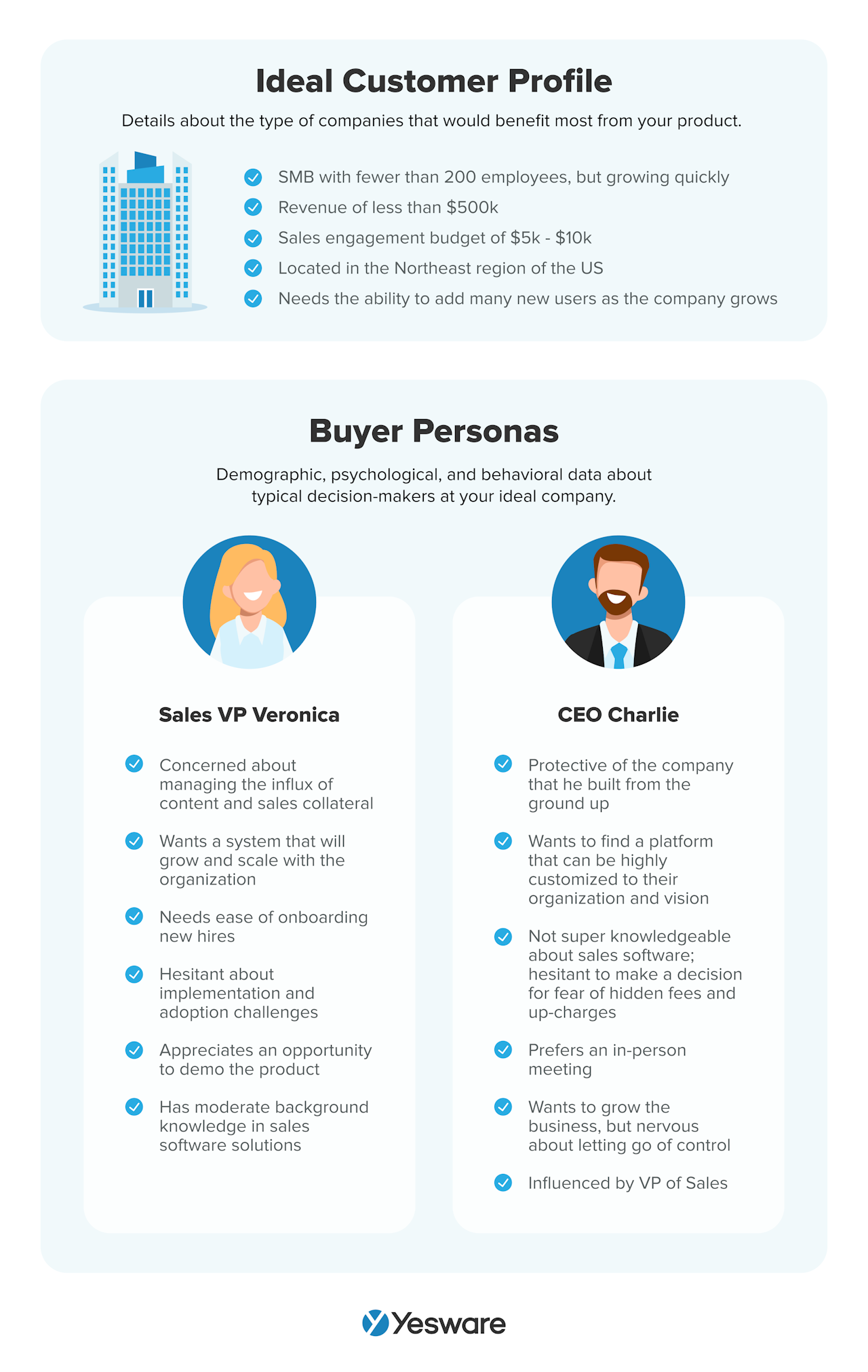 These profiles need to be much deeper than cute infographics and avatars, though. They need to be as quantified as possible. Data on the ICP and buyer personas should include data about their WTP range, their customer lifetime value (LTV), and their customer acquisition cost (CAC).
These profiles need to be much deeper than cute infographics and avatars, though. They need to be as quantified as possible. Data on the ICP and buyer personas should include data about their WTP range, their customer lifetime value (LTV), and their customer acquisition cost (CAC).
4. Competitor Pricing
As unique as your pricing strategy needs to be to your team and your market, it can’t be created without taking into account your competitors’ approaches.
Your prices don’t necessarily need to be lower than the competition, but you need to address any gaps in pricing with the way you present your value.
A thorough competitive analysis can help shed light on how your price and offer value stack up against the competition.
5. Positioning
Ultimately, one of the factors that will best help you determine how to price your offer is your position in the market. Part of this will be determined through competitive analysis.
You’ll also want to determine your value metric. This is, in summary, what precisely you charge for.
Calculating your value metric can be done by answering the question: What value are you providing directly to the customer? For most B2B companies, the answer to that question is usually something like saving money, gaining revenue, or saving time.
You can find out more about your value metric by talking to satisfied customers about what’s most important to them.
This information can help you figure out your unique position in the market. What do you offer that’s different or better than the competition? How much value do you offer relative to everyone else, and how should that be factored into pricing?
Studies have shown that companies that use value metrics to price their products grow at double the rate with half the churn. They also have two times the expansion revenue when compared to companies that charge a flat fee, or where the only difference between their pricing tiers are features.
Pricing Mistakes to Avoid
Avoid the following pricing mistakes to optimize the process and ensure you have the most effective pricing strategy for your team.
Go Beyond COGs
Although pricing strategy requires a tremendous amount of data analysis, it’s also more nuanced than just raw numbers. Pricing strategy needs to have some art alongside the science — this is part of why it can often take time and several iterations to find the right fit.
Allow room for non-numerical data to play into your decision-making about pricing.
Don’t Go On Gut
That being said, this shouldn’t be a “gut decision.” Pricing strategies should be data-based and research-fueled.
There’s plenty of data that can be uncovered that isn’t numerical. You may, for example, get wind that your main competitor is soon to break a major executive layoff and will be in a vulnerable position in a month’s time. This data could play into your pricing strategy.
The point here is to avoid throwing things at the wall and seeing what sticks. It’s okay to use non-numerical data, but make sure it’s factual and research-based.
Don’t Get Complacent
It’s expected that pricing strategies and models will change over time. This is not a set-it-and-forget-it type of metric. Pricing strategies should be continuously analyzed and updated as needed in order for them to be effective.
What does your pricing strategy look like? How about your pricing model? How has it changed over time?
Get sales tips and strategies delivered straight to your inbox.
Yesware will help you generate more sales right from your inbox. Try our Outlook add-on or Gmail Chrome extension for free, forever!
Related Articles
Casey O'Connor
Casey O'Connor
Casey O'Connor
Sales, deal management, and communication tips for your inbox
